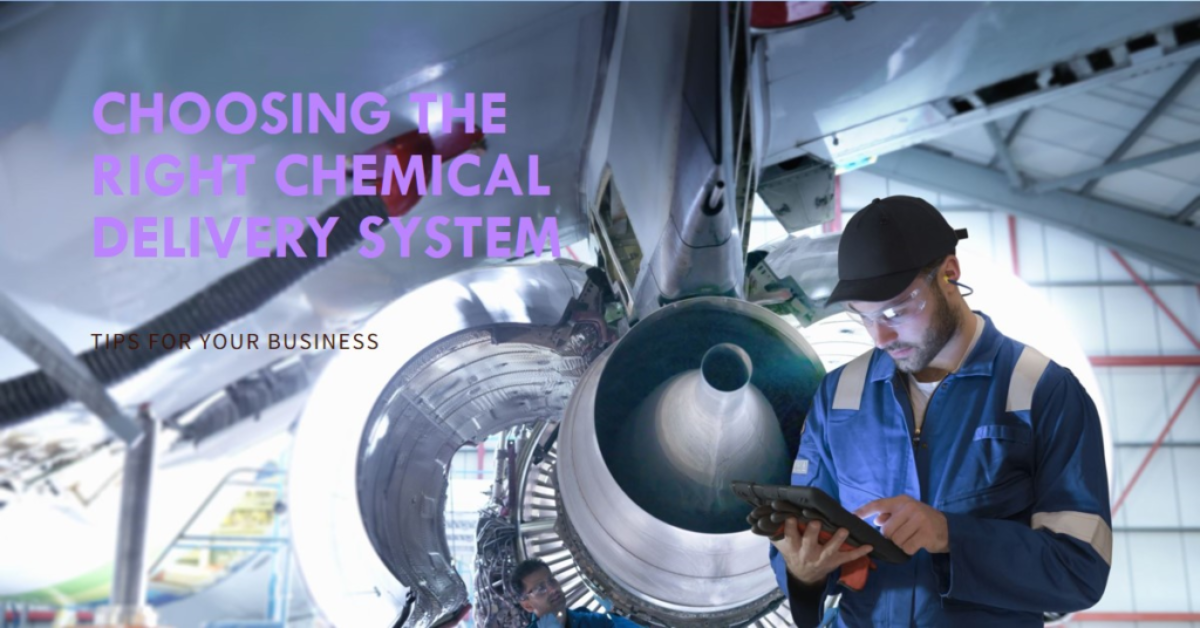How to Select the Optimal Chemical Delivery System for Your Business
Choosing the right chemical delivery system for your business is a crucial decision that can significantly impact your operations, safety, and bottom line. The right system ensures that chemicals are delivered accurately, efficiently, and safely, minimizing waste and reducing the risk of accidents. However, with the vast array of options available, selecting the optimal system can be a daunting task. This article provides a comprehensive guide to help you navigate the selection process, ensuring that you make an informed decision that best suits your business needs.
1. Understanding the Importance of a Chemical Delivery System
Before delving into the selection process, it’s essential to understand why a chemical delivery system is vital for your business. These systems are designed to handle the precise delivery of chemicals in various industrial applications, including manufacturing, water treatment, agriculture, and more. An optimal chemical delivery system can enhance productivity, ensure compliance with regulatory standards, improve safety, and reduce costs associated with chemical handling and disposal.
2. Assessing Your Business Needs
The first step in selecting the right chemical delivery system is to thoroughly assess your business needs. This involves understanding the types of chemicals you use, the quantities required, the frequency of delivery, and the specific applications for which the chemicals are used. Consider the following factors:
- Types of Chemicals: Different chemicals require different handling and delivery methods. For example, corrosive chemicals may require systems made of specialized materials that can withstand harsh conditions.
- Quantity and Frequency: The volume of chemicals your business uses and how often they need to be replenished will influence the size and capacity of the system you choose.
- Application Requirements: Some applications may require precise dosing, while others may need bulk delivery. Understanding these requirements will help you select a system that meets your operational needs.
3. Evaluating System Compatibility
Compatibility is a critical factor when choosing a chemical delivery system. The system you select must be compatible with the chemicals you use, your existing infrastructure, and your overall operations. Here are some key considerations:
- Material Compatibility: Ensure that the materials used in the construction of the system (such as tubing, pumps, and valves) are compatible with the chemicals you intend to deliver. Incompatible materials can lead to corrosion, leaks, and system failure.
- Operational Compatibility: The system should integrate seamlessly with your existing processes and equipment. For instance, if you have an automated production line, the chemical delivery system should be able to communicate with your control systems.
- Environmental Compatibility: Consider the environmental conditions in which the system will operate. Factors such as temperature, humidity, and exposure to sunlight can affect the performance and longevity of the system.
4. Considering Safety and Compliance
Safety is paramount when dealing with chemicals, and your delivery system must prioritize this aspect. Additionally, compliance with industry regulations and standards is essential to avoid legal repercussions and ensure the safety of your employees and the environment.
- Safety Features: Look for systems equipped with safety features such as leak detection, automatic shut-off valves, and pressure relief mechanisms. These features can prevent accidents and minimize the risk of chemical spills.
- Regulatory Compliance: Ensure that the system complies with relevant local, national, and international regulations. This includes standards set by agencies such as the Occupational Safety and Health Administration (OSHA), Environmental Protection Agency (EPA), and others.
- Training and Documentation: Proper training for your staff on how to operate the system safely is crucial. Additionally, comprehensive documentation should be provided, including safety data sheets (SDS), operation manuals, and maintenance guides.
5. Assessing System Scalability and Flexibility
As your business grows, your chemical delivery needs may evolve. Therefore, it’s important to select a system that is both scalable and flexible to accommodate future changes.
- Scalability: Choose a system that can easily be expanded or upgraded as your business needs increase. This might involve adding more storage tanks, increasing pump capacity, or integrating new technologies.
- Flexibility: A flexible system can adapt to changes in chemical usage, delivery schedules, and operational processes. This ensures that your system remains efficient and effective, even as your business evolves.
6. Exploring Automation and Technological Integration
In today’s digital age, automation and technology play a crucial role in optimizing chemical delivery systems. Automated systems can enhance accuracy, reduce labor costs, and improve overall efficiency.
- Automation Capabilities: Look for systems that offer automated dosing, mixing, and monitoring capabilities. Automated systems can precisely control the amount of chemical delivered, reducing waste and ensuring consistent product quality.
- Technological Integration: Integrating your chemical delivery system with chemical delivery software can provide real-time data on chemical usage, inventory levels, and system performance. This information can help you make informed decisions, optimize operations, and reduce costs.
7. Considering Maintenance and Support
The longevity and reliability of your chemical delivery system depend on regular maintenance and access to support services. When selecting a system, consider the following:
- Ease of Maintenance: Choose a system that is easy to maintain, with components that are readily accessible and replaceable. Regular maintenance is crucial to prevent downtime and extend the life of the system.
- Manufacturer Support: Ensure that the manufacturer offers comprehensive support services, including technical assistance, spare parts availability, and warranty coverage. Reliable support can minimize downtime and ensure that any issues are resolved quickly.
- Training and Resources: Access to training resources and user manuals is essential for your staff to operate and maintain the system effectively. Some manufacturers offer online training modules, workshops, and technical support to help your team stay up-to-date with the latest best practices.
8. Evaluating Cost and Return on Investment (ROI)
Cost is always a significant factor in any business decision, and selecting a chemical delivery system is no exception. However, it’s important to consider not just the initial purchase price but also the total cost of ownership and the potential return on investment (ROI).
- Initial Cost: Compare the upfront costs of different systems, including installation, setup, and training. Be sure to factor in any customization or additional features that may be required.
- Operating Costs: Consider the ongoing costs associated with operating the system, such as energy consumption, maintenance, and consumables (e.g., filters, seals, etc.). Automated and efficient systems may have higher upfront costs but can offer significant savings over time.
- ROI Calculation: Evaluate the potential ROI by considering factors such as reduced chemical waste, improved production efficiency, lower labor costs, and enhanced product quality. A system that offers a high ROI may justify a higher initial investment.
9. Reviewing Case Studies and Customer Feedback
One of the best ways to gauge the effectiveness of a chemical delivery system is by reviewing case studies and customer feedback. Real-world examples can provide valuable insights into how a system performs in similar applications to yours.
- Case Studies: Look for case studies from businesses in your industry that have successfully implemented the system you’re considering. These studies can highlight the system’s strengths, potential challenges, and overall impact on operations.
- Customer Testimonials: Seek out customer testimonials and reviews to understand the experiences of other users. Pay attention to any recurring issues or common praises to get a well-rounded view of the system’s performance.
10. Making the Final Decision
After conducting thorough research, evaluating different options, and considering all the factors discussed, it’s time to make the final decision. To ensure you select the optimal chemical delivery system for your business, follow these steps:
- Create a Shortlist: Narrow down your options to a shortlist of systems that meet your business needs, budget, and operational requirements.
- Request Proposals: Contact the manufacturers or suppliers of the shortlisted systems and request detailed proposals. These proposals should include technical specifications, pricing, and support services.
- Conduct a Trial: If possible, arrange for a trial or demonstration of the system in your facility. This hands-on experience can provide valuable insights into the system’s usability, compatibility, and performance.
- Consult with Stakeholders: Involve key stakeholders, such as operations managers, safety officers, and maintenance personnel, in the decision-making process. Their input can help ensure that the selected system aligns with your business goals and operational needs.
- Finalize the Purchase: Once you’ve made your decision, work closely with the supplier to finalize the purchase and schedule the installation. Ensure that all necessary training and support services are in place before the system goes live.
11. Implementing and Optimizing Your Chemical Delivery System
Selecting the right chemical delivery system is only the first step. Successful implementation and ongoing optimization are critical to realizing the full benefits of your investment.
- Installation: Work with the supplier to ensure that the system is installed correctly and integrated seamlessly with your existing infrastructure. Proper installation is crucial for optimal performance and safety.
- Training: Provide comprehensive training to your staff on how to operate, maintain, and troubleshoot the system. Well-trained employees are essential for maximizing the efficiency and safety of your chemical delivery system.
- Monitoring and Optimization: Continuously monitor the system’s performance and make adjustments as needed. Utilize the data provided by chemical delivery software to track usage patterns, identify inefficiencies, and optimize operations.
- Regular Maintenance: Establish a regular maintenance schedule to keep the system in top condition. Preventative maintenance can help avoid costly repairs, reduce downtime, and extend the life of the system.
12. Future Trends in Chemical Delivery Systems
The field of chemical delivery systems is constantly evolving, with new technologies and innovations emerging that can further enhance efficiency, safety, and sustainability. As you plan for the future, consider the following trends:
- IoT Integration: The Internet of Things (IoT) is making its way into chemical delivery systems, allowing for remote monitoring, real-time data analysis, and predictive maintenance. IoT-enabled systems can provide valuable insights that help optimize operations and reduce costs.
- Sustainability: There is a growing focus on sustainability in chemical delivery systems. This includes the development of eco-friendly materials, energy-efficient designs, and systems that minimize chemical waste. Investing in a sustainable system can enhance your business’s environmental credentials and reduce regulatory risks.
- Advanced Automation: Automation is becoming increasingly sophisticated, with advancements in robotics, artificial intelligence (AI), and machine learning. These technologies can further improve the precision, reliability, and efficiency of chemical delivery systems.
13. Conclusion
Selecting the optimal chemical delivery system for your business is a complex decision that requires careful consideration of various factors, including your specific needs, safety, compliance, cost, and future growth. By following the guidelines outlined in this article, you can make an informed choice that not only meets your current requirements but also positions your business for long-term success.
Remember, the right chemical delivery system is an investment in the efficiency, safety, and profitability of your business. Take the time to research your options, consult with experts, and choose a system that aligns with your operational goals and values. With the right system in place, you can streamline your chemical delivery processes, reduce risks, and enhance your overall business performance.




